
5S Implementation In Ceramic Dolls Manufacturing Factory
V. Shridhar | [email protected]
Unique No.: 2015-8
Keywords: 5S, Seiri, Seiton, Seiso, Seiketsu, Shitsuke
5S is a systematic structured program implemented in industries to enhance productivity and turnover, creating a clean safe work space. This is Japanese technique simple inexpensive and easy to follow method.
Ceramic dolls making industry is situated at Vridhachalam in South India. They make ceramic dolls, idols of God, animals, birds for decorating the rooms in lavish bungalows and for traditional festivals. It is a family business. The owners of these industries are not rich, the infrastructure of these industries is poor with thatched roof and lot of space constraint. The ‘returns’ of their hard labour is meagre. The businessmen from big cities come and buy at a low price (with 10% profit) and sell at high price.
Government of India took up a project to implement 5S in these industries.
Objectives : The main objectives of 5S implementation were:
- Enhance productivity
- Enhance turnover
- Improve quality
- Enhance space utilization
- Improve working conditions : Clean and Safe
Introduction
5S was invented in Japan after the 2nd World War. It consists of 5 words starting with ‘S’:
- 1S- Sort
- 2S- Set-in-Order
- 3S-Shine
- 4S- Standardize
- 5S-Sustain
5S Implementation was done in the following manner:
First Step: Diagnostic Study of the Industry was conducted
The factory was visited and the present state was observed after the preliminary discussion. The preliminary information was collected such as: name of the industry, the proprietor, year of establishment, products manufactured, turnover.
The process of manufacturing was studied and a flowchart was prepared, placement of raw material, moulds, paints etc. was observed. The place for working was checked.
Observations:
- Raw material was kept in a haphazard way. All types of raw material were dumped at a place.
- Paints, glaze, moulds and other tools were kept everywhere in the shop floor.
- Employees worked wherever they found place.
- Rejected items, empty gunny bags, wooden platform used for transporting dolls for next operation were dumped everywhere.
- There was no place for walking in the shop floor.
- Equipment, machinery were dusty and dirty.
- Systematic cleaning or maintenance of equipment was not present.
- Processes & flow chart did not exist.
Problems faced:
- Searching for raw material, moulds, and paints was high.
- Shortage of space.
- Transportation & movement was difficult and a lot of time was wasted.
- No place for keeping finished goods.
- Working environment was dusty and dirty.
Second Step:
One Day Training on Awareness of 5S was conducted for all the employees. What is 5S? Their roles and responsibilities, benefits of implementing 5S were explained fully.
Third Step : Hand holding & implementation: This was done in 5 Stages.
1S: Sort
Activities Done:
In this all employees were asked to separate the ‘wanted’ & ‘unwanted’ items in their respective areas.
The ‘unwanted’ items were ‘Red Tagged’ and kept in a particular place.
The ‘Red Tag’ is a card giving details as: name of the item, why unwanted –broken, rejected, waste etc., what should be done: Rework/Rejected/ Reuse/Scrap
The ‘wanted’ items were segregated and kept in another place.
2S- Set-in-Order:
The ‘wanted’ items were classified as ‘raw material’, ‘tools’, ‘paints’ ‘glaze’ etc.
Activities in 2S;
- Designating a place for ‘Raw material’, ’Paints’, ‘Glaze’, ‘Packing & Dispatch’ etc.
- Labeling of the’ Designated’ place
- Displaying Name of the Process in the place allotted: ‘Molding’ ‘Spray Painting’ ‘Cleaning & Washing’ etc.
- Displaying Name of the sections for processes.
- Labeling of Machine & Equipment, Electrical Switches etc.
- “A Place for Everything in its Place” was ensured.
3S- Shine
Activities Done: Developing & Following of:
- ‘Cleaning Schedule’ presenting the frequency of Cleaning : Daily, Weekly, Monthly etc. that will be followed for Machines & Equipment, Floor, Windows, Lights & Fans
- Machine & Equipment Cleaning Chart : Ensuring cleaning done regularly & certified by Supervisor/Manager
- Cleaning Chart for Utilities etc.
4S – Standardization
Activities Done:
- Developing of ‘Standardization’ Chart
- Monitoring of the different activities and maintaining the ‘Standardization’ Chart regularly.
- Ensuring the activities in ‘Standardization’ chart followed and Action taken wherever needed
5S- Sustain
Activities Done:
- Developing a methodology to ensure 5S implemented is maintained.
- Methodology developed to monitor employees to follow 5S
- Regular 5S Training to all employees
- Nomination of 5S Champions
- Motivation to ‘Active’ 5S followers.
- Conducting Audit regularly & action taken to mitigate the same.
Benefits of 5S Implementation:
The industries were highly benefitted by implementation of 5S. The benefits were:
- Extra Space Generated: 10% – Removal of ‘Unwanted’ items created space for utilization.
- Enhancement of Productivity by 15 %
- Reduction of ‘Search’ time: “A Place for Everything and everything in its Place “, reduced the time of searching for items (Raw material/Paint/Tools etc.)
- Reduction in travel time of employees within the shop floor; Gangways marked created easy access to the items and for movement of material.
- Reduction in ‘Downtime’ of Machines and Equipment by 15% – Regular cleaning of machines helped in detecting defects at early stage & repaired in short time.
- Increase in Morale of the employees
- Enhancement of Turnover by 10%
Before 5S Implementation Photos
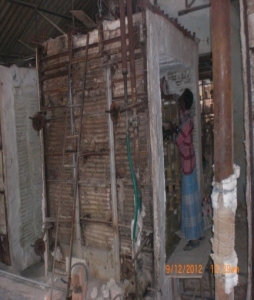
“Shuttle Kiln” to be labelled
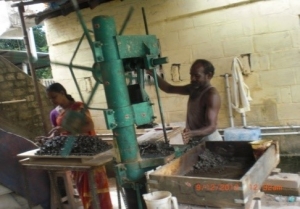
Area near the Machine to be cleaned
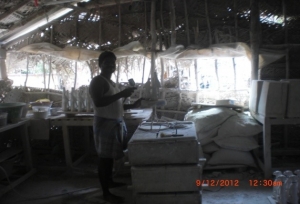
“Moulding” to be displayed
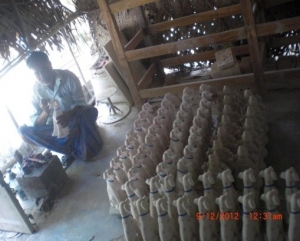
“Finishing” to be displayed
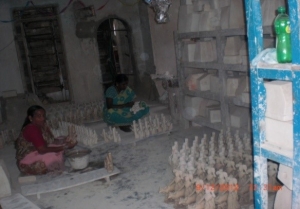
Before 5s implementation photo
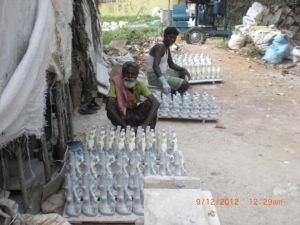
“Packing” to be displayed
After 5S Implementation Photos
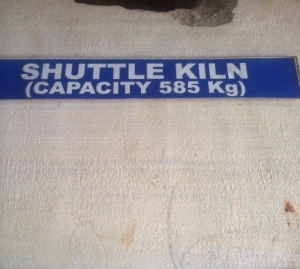
“Shuttle Kiln” labelled
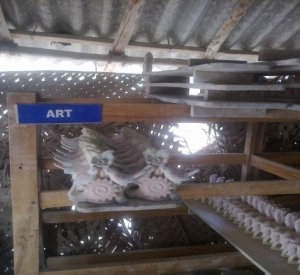
Process “Art” displayed
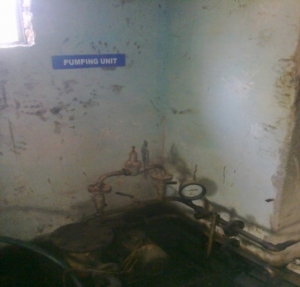
Part of Kiln labelled
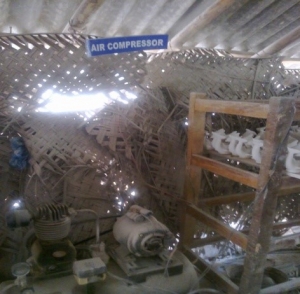
Name of Equipment labeled
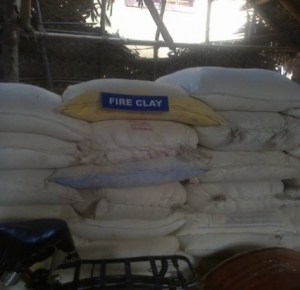
Raw material labelled
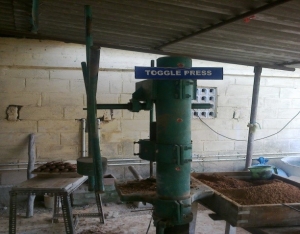
Name of Machine labelled
Forms, Charts & Checklists
Cleaning Schedule
| A | Machine Cleaning | Daily |
| B | Floor Cleaning | Daily |
| C | Yellow Line Marking | Monthly |
Machine Cleaning Chart
| Month: ____________________ | |||||||||||
| Machine/Equipment | 1st Wk | 2nd Wk | 3rd Wk | 4th Wk | 5th Wk | ||||||
| Manager/In-Charge | |||||||||||
| Standardisation | |||||||||||
| S.No | Description /Task | YES | NO | Action to be taken | Signature & date | ||||||
| 1 | Cleaning Chart followed & Updated | ||||||||||
| 2 | M\c Cleaning chart followed & Updated | ||||||||||
| 3 | Checking of Items placed in designated area | ||||||||||
| 4 | Visual Management : Labels/Sign boards are maintained | ||||||||||
| 5 | Training of personnel about 5S being done | ||||||||||
| 6 | 5S Audit done monthly & Record kept | ||||||||||
| 7 | Involvement of people is there | ||||||||||
5S AUDIT CHECK LIST
| 5- S Maturity Assessment Checklist | Scoring System | ||
| Area Assessed/ Audited | Scale / # Problems | Rating / Score | |
| Date of Assessment | High – 5 or more | 1 | |
| Time of Assessment/ Audit | 03-Apr | 2 | |
| Name of Assessor/ Auditor | 2 | 3 | |
| Name of Assesse/ Auditee | 1 | 4 | |
| Low – None | 5 | ||
| Category | Criteria | Score | Opportunity for Improvement |
| Sort/ Seiri | Distinguish between what is needed and not needed | ||
| Sort Through & Discard Unused Items | Procedures are established to identify unnecessary items | ||
| Methods of waste disposal are established (Whether adopting segregation at source) | |||
| Unneeded equip., storage, furniture, etc. exist | |||
| Unneeded items on walls / bulletin boards, etc. exist | |||
| Aisles, stairways, corners etc. are free of items | |||
| Unneeded inventory, papers, or materials exist (drawers / cabinets / tables / storage areas) |
| Category | Criteria | Score | Opportunity for Improvement |
| Set in Order/ Seiton | A place for everything and everything in its place | ||
| Use Labels, Lines, Signs & Colours to identify Normal vs. Abnormal Conditions | All items have a specific location | ||
| Equipment /machines , cabinets, work surfaces, and storage areas are clearly labelled and well organized | |||
| Personal belongings and documents are placed in a dedicated place and based on their necessity/( items on desk/ cupboard) | |||
| All items are placed in the proper location. Documents and Files be retrieved easily in a minute. | |||
| Fire Extinguisher are placed properly | |||
| Lights are adequate | |||
| Electrical fitting, switches etc. are in proper order & Indicated | |||
| Exits and fire extinguishers are obstacle free | |||
| All items are labelled uniquely | |||
| Aisle ways, workstations, equipment locations are identified and labelled |
| Category | Criteria | Score | Opportunity for Improvement |
| Shine/ Seiso | Routine discipline maintaining a clean and organized workplace | ||
| Cleaning is a Method of Inspection, Look for Hidden Defects | Equipment, computers, work surfaces, and storage areas are clean | ||
| Cleanliness of name plates, doors, windows, glasses, fans, lights, walls | |||
| Garbage and recyclables are collected and disposed correctly | |||
| Stationery are stored in designated Cupboards | |||
| Odour, cleanliness, ventilation in toilets. | |||
| Shared areas are cleaned and maintained regularly. Frequency is proper. | |||
| Cleaning Charts are update regularly & Checked by 5S Champions |
| Category | Criteria | Score | Opportunity for Improvement |
| Standardize/ Seiketsu | Method for maintaining Cleanliness Everywhere | ||
| Standardize the Rules to Make 5S a Habit | Specific cleaning and organizing tasks/ guidelines have been developed and assigned for the work Stations | ||
| Staff is trained and fully understands 5S procedures | |||
| 5S standards are clearly displayed | |||
| Visual Management tools used |
| Category | Criteria | Score | Opportunity for Improvement |
| Sustain / Shitsuke | Stick to the rules (self-discipline) | ||
| Sustaining plans are developed to ensure accountability | Everyone is involved in the improvement activities | ||
| Standardized cleaning and work procedures are followed | |||
| 5S documentation and instructions are current | |||
| 5S audits occur regularly | |||
| Overall Comments (If Any) | Total score achieved | 0 | |
| Total score | 150 | ||
| 5 S score in % | 0 |

